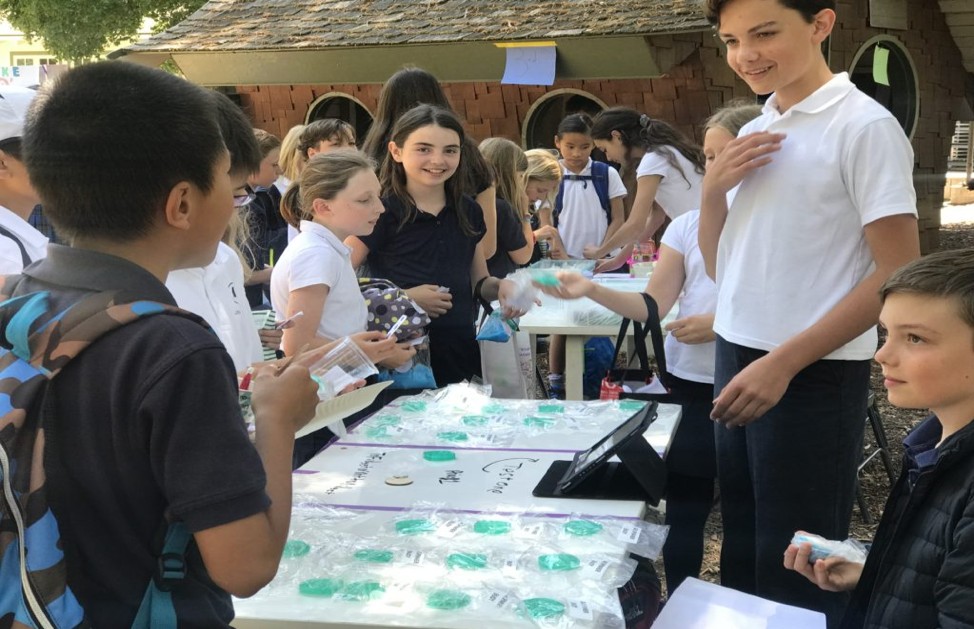Parents have a responsibility with their children – to guide them through life and ensure they are well-adjusted and well-cared for. Parents also have an opportunity with their children – to show them they have a place and a role in the greater world, and to teach them that it’s never too early to start making a difference.
Social entrepreneurship provides a channel for students to start giving back and to learn about ways to have a multi-faceted impact. This approach empowers people at the individual level, as well as startups and other companies, to develop and fund businesses that will make a difference and provide solutions that impact the world.
How does social entrepreneurship have a positive impact on students?
1. Social entrepreneurship fosters a culture of integrated learning.
When students are involved in a social entrepreneurship project, they’re not just memorizing lists of facts or dates. They’re not sitting in the classroom absorbing information to regurgitate on a quiz or test.
Instead, they’re gathering information and assimilating it across multiple disciplines and using it to develop solutions. For example, students in Hillbrook’s seventh grade class developed a marketplace as an opportunity to put their classroom-acquired math skills into action.
Students worked across a variety of disciplines to create, staff and analyze the market.
- As they created products for sale, they used science, math and engineering skills.
- As they developed product packaging, they used language and art skills to create compelling message concepts and design.
- As they created “Kindness Kits” for sale, they put their social entrepreneurship skills to work, creating a product that would allow people to buy a product and make a positive change in their world.
- As they completed the event, they continued integrated learning procedures through analysis of the event’s logistics, success and consumer behaviors.
2. Social entrepreneurship shows children they have the power to use their skills and make a difference.
Do you remember being a child and feeling like adults were constantly telling you what to do? Feeling like you didn’t have agency to make your own choices?
As parents with busy schedules, it’s easy to take control of every aspect of a child’s life – what they eat, what they wear, what they do with their after-school time.
As social entrepreneurs, children have the opportunity and a safe space to make their own decisions, to decide what matters to them, then look for ways to take action around those issues.
For example, at the Scott Center for Social Entrepreneurship at Hillbrook School, educators focus their efforts on showing children they are not small and incapable of autonomy, but instead are strong and empowered to make a difference, to live out Hillbrook’s motto of “[seeing] the world as it is, [imagining] what it might be, and [partnering] with communities to realize long-term impact for people and the planet.”
At the Scott Center, the “What Matters to Me” wall is a physical representation of the thoughts and desires and abilities of students, from preschoolers to eighth graders and beyond. The wall is covered with postcards where students, educators and visitors are encouraged to share the things that are on their mind, to share visions for the future, and to share stories of other changemakers.
And, “What Matters to Me?” isn’t the only question that needs to be asked; students need to be given a plan and tools to start making impactful moves.
3. Social entrepreneurship empowers students to develop problem-solving and communication skills.
Social entrepreneurship projects and world-shaping changes can’t happen in a vacuum. Instead, the students involved in the program have to work together and build a project from their
That’s why, at the Scott Center at Hillbrook, students are asked to think on more than just “What Matters to Me?” They’re also expected to answer the question “What Am I Going To Do About It?”
And, doing something about it generally requires teamwork, communication, collaboration and storytelling.
Students who are working on a project to fund entrepreneurs through a Kiva partnership, for example, can’t just expect to read the documents on their own and make a decision.
To achieve true change, they need to work together to build solutions, to determine which microbusinesses could use funding, to envision ways the funding could make a difference, and to continue sharing the stories of these small business owners so they can also make a change and impact on the world.
Social entrepreneurship makes children’s world bigger and helps them to find their place to grow, contribute and make a difference.
As you seek to support your children in finding this place for their growth and development, Hillbrook School can provide an environment where they’re encouraged to contribute through social entrepreneurship. Contact the Hillbrook School to visit the campus and the Scott Center for Social Entrepreneurship, and to learn about how Hillbrook prepares students to make an impact on the world.

